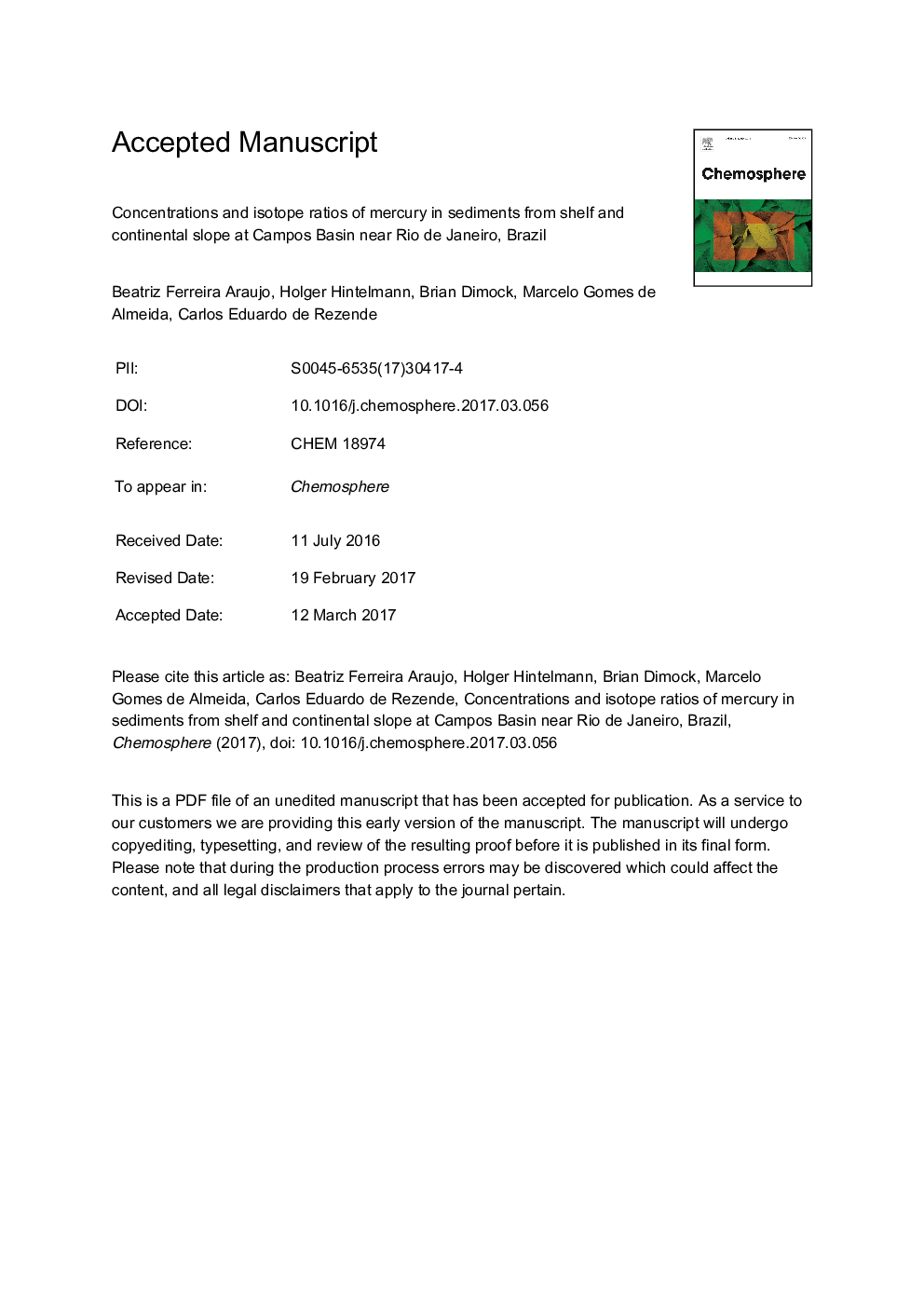| Article ID | Journal | Published Year | Pages | File Type |
|---|---|---|---|---|
| 5747218 | Chemosphere | 2017 | 36 Pages |
Abstract
Mercury (Hg) may originate from both anthropogenic and natural sources. The measurement of spatial and temporal variations of Hg isotope ratios in sediments may enable source identification and tracking of environmental processes. In this study we establish the distribution of mercury concentrations and mercury isotope ratios in surface sediments of three transects along the continental shelf and slope in Campos Basin-RJ-Brazil. The shelf showed on average lower total Hg concentrations (9.2 ± 5.3 ng gâ1) than the slope (24.6 ± 8.8 ng gâ1). MMHg average concentrations of shelf 0.15 ± 0.12 ng gâ1 and slope 0.13 ± 0.06 ng gâ1 were not significantly different. Distinct differences in Hg isotope ratio signatures were observed, suggesting that the two regions were impacted by different sources of Hg. The shelf showed more negative δ202Hg and Î199Hg values ranging from â0.59 to â2.19â° and from â0.76 to 0.08â°, respectively. In contrast, the slope exhibited δ202Hg values from â0.29 to â1.82â° and Î199Hg values from â0.23 to 0.09â°. Mercury found on the shelf, especially along the “D” and “I” transects, is depleted in heavy isotopes resulting in more negative δ202Hg compared to the slope. Isotope ratios observed in the “D” and “I” shelf region are similar to Hg ratios commonly associated with plants and vegetation and very comparable to those detected in the estuary and adjoining mangrove forest, which suggests that Hg exported from rivers may be the dominating source of Hg in near coastal regions along the northern part of the shelf.
Related Topics
Life Sciences
Environmental Science
Environmental Chemistry
Authors
Beatriz Ferreira Araujo, Holger Hintelmann, Brian Dimock, Marcelo Gomes Almeida, Carlos Eduardo Rezende,
